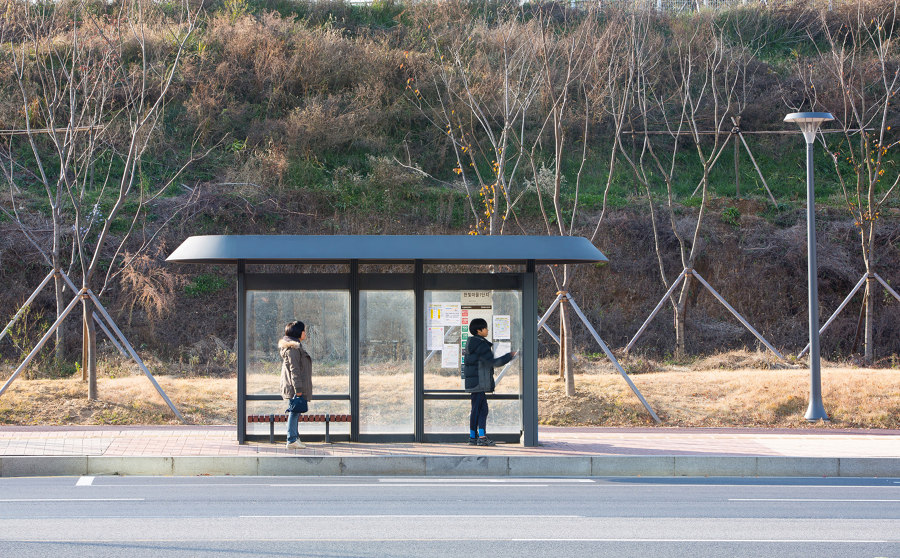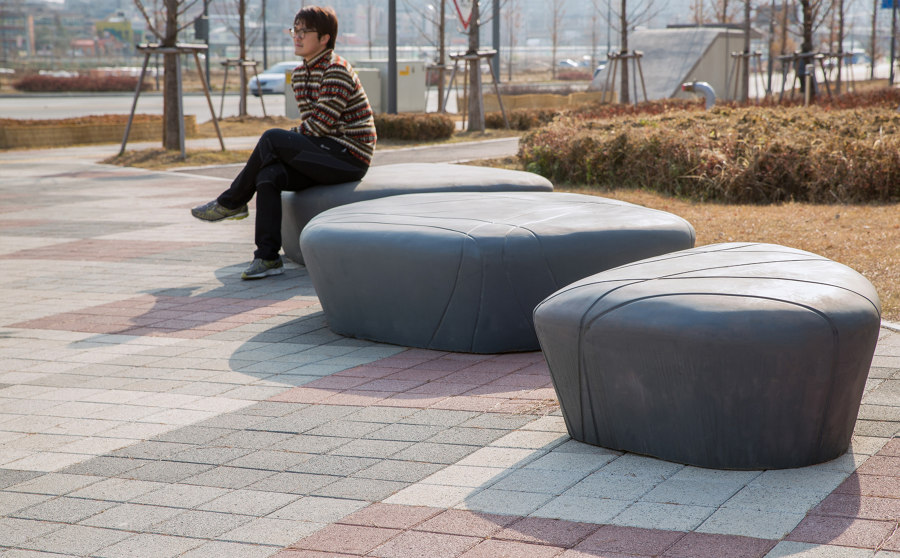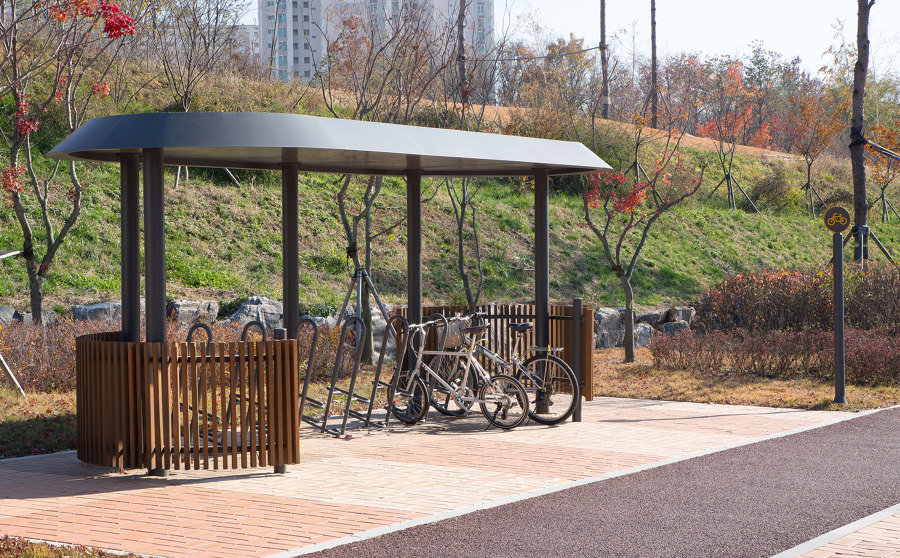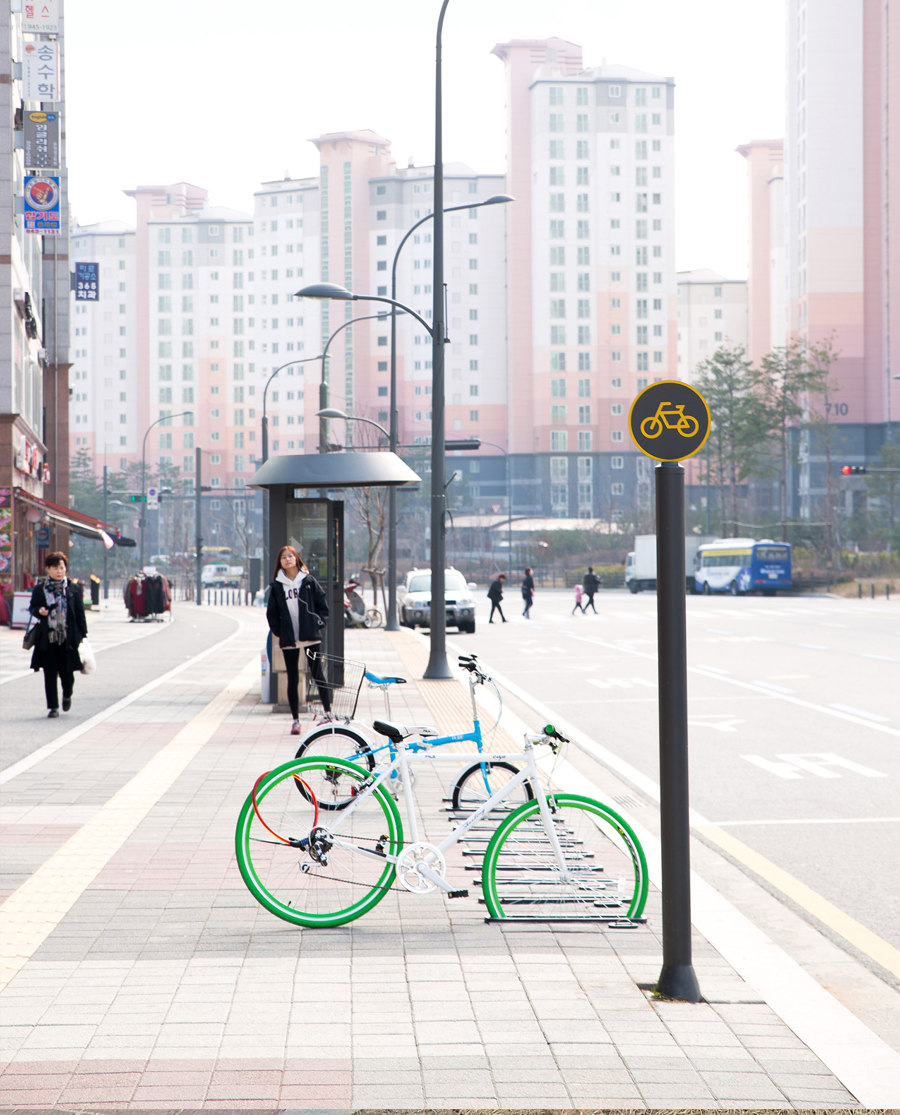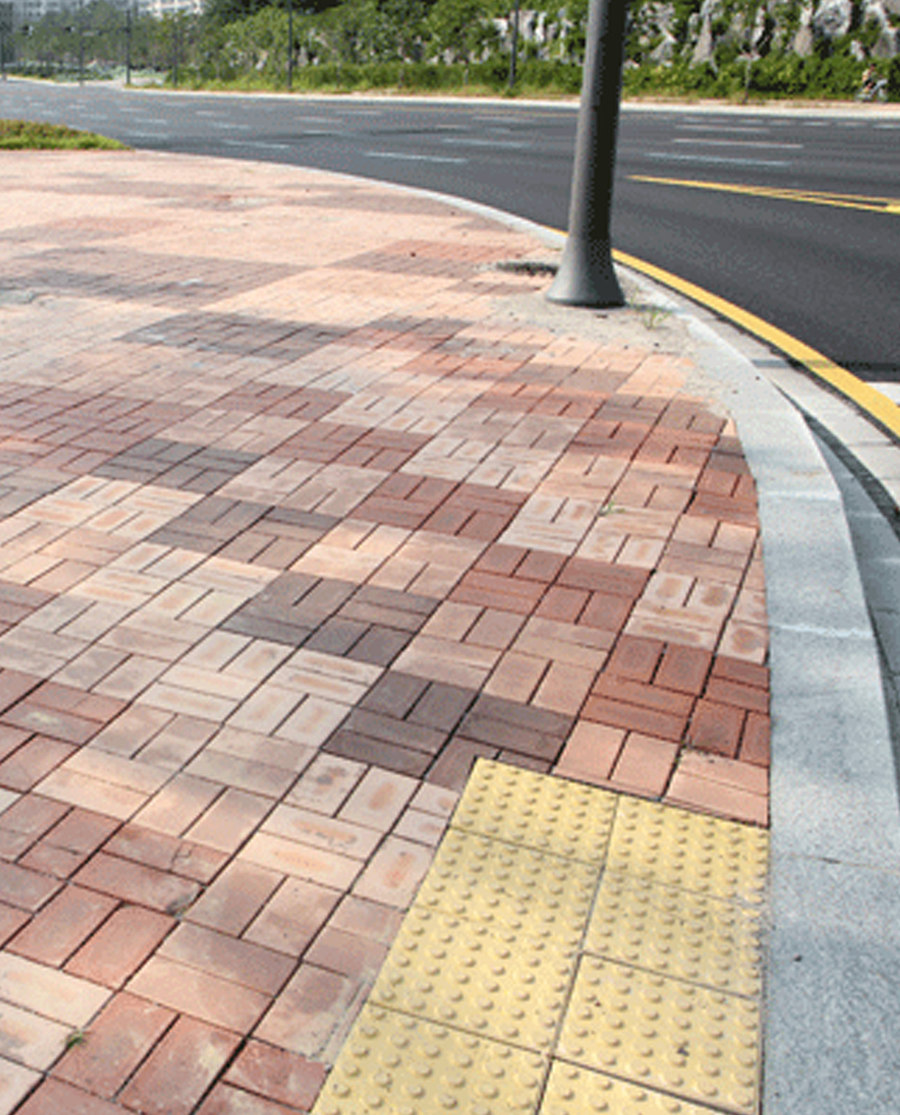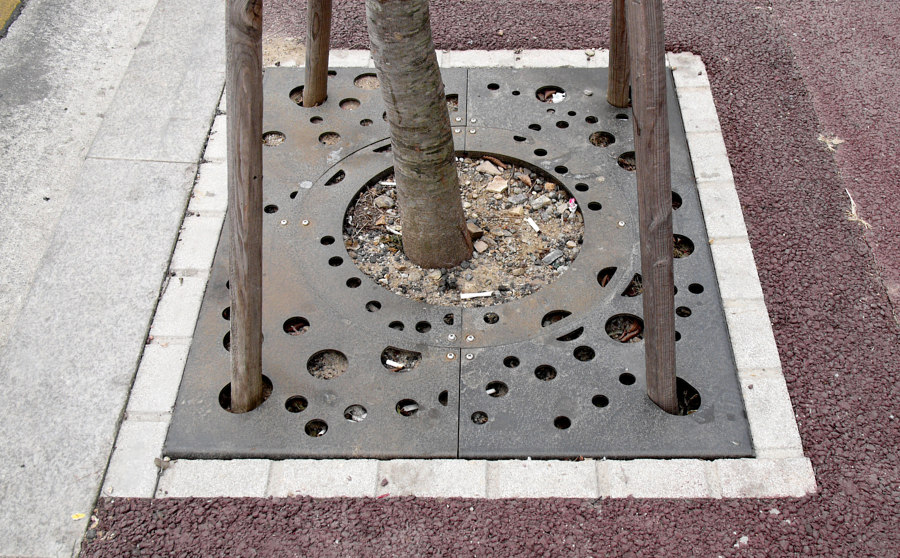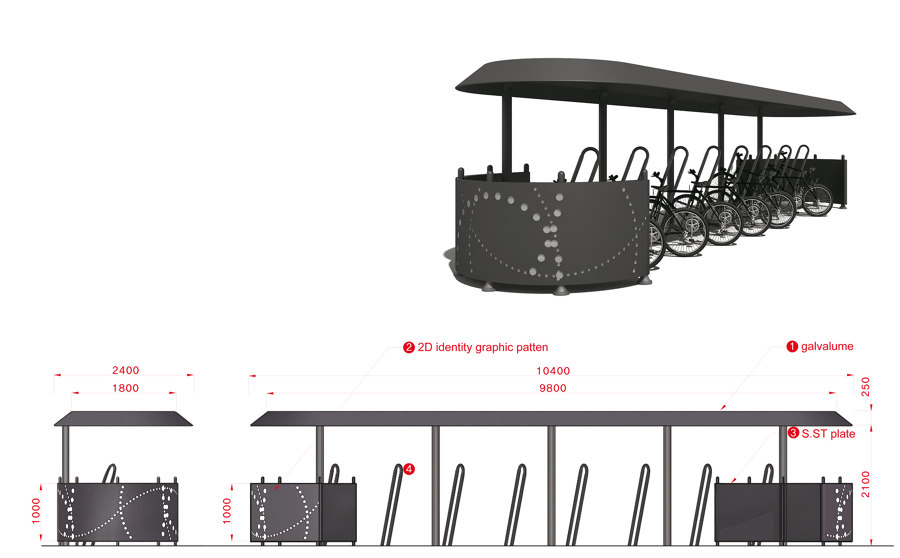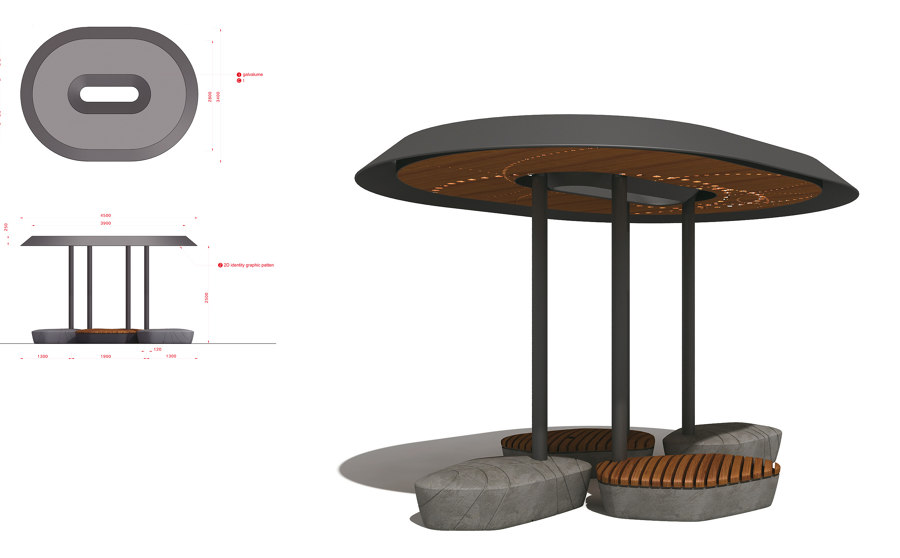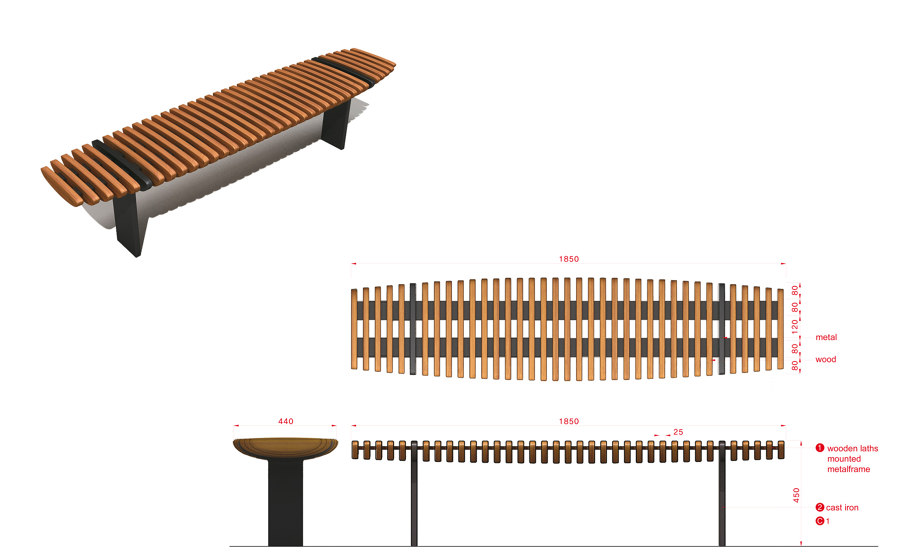The new city of Paju, to the north of Seoul, South Korea, was established in 1997 with 250,000 homes. There are now almost 450,000 people living there. In cooperation with internationally renowned Korean designer Ahn Sang-Soo, Dutch design firm Studio Dumbar, which was responsible for the corporate design, and Hongik University in Seoul, unit-design developed a complete system of street furniture. This included the design of flooring, various types of seats, benches and shelters, stops for public transit, bicycle parking facilities, all kinds of street lighting and sign systems, as well as housings for technical infrastructure.
The guiding principle behind the design concept was that of making it possible for residents to experience things on a human scale in an urban landscape made up of large, sterile new buildings. For example, the various shelters were intended to create a space and a focus suited to the size of people.
Another recurring theme in the design was the aspect of being welcoming. The shape of the roofing was intended to indicate clearly that it offered protection, while the "sitting stones" were meant to project calm through their solid, pebble-like shapes, trash cans opened toward users and the structure of the flooring subtly became more robust at crossings and street corners.
The furniture for Paju comprises stand-alone elements that fit together into one family in terms of materials, surfaces and colors without following a strict design principle.
Design team:
unit-design
